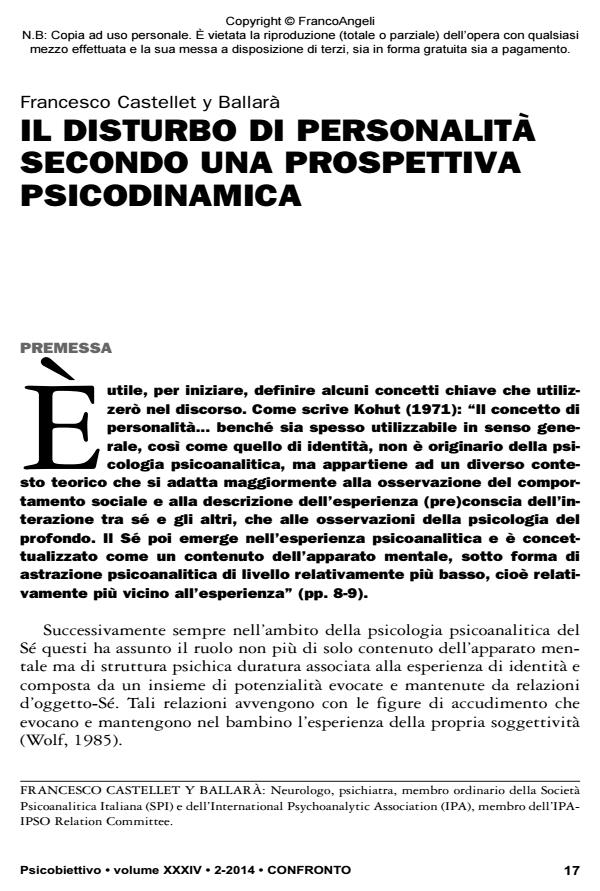Il disturbo di personalità secondo una prospettiva psicodinamica
Titolo Rivista PSICOBIETTIVO
Autori/Curatori y Ballarà Francesco Castellet
Anno di pubblicazione 2014 Fascicolo 2014/2
Lingua Italiano Numero pagine 12 P. 17-28 Dimensione file 543 KB
DOI 10.3280/PSOB2014-002002
Il DOI è il codice a barre della proprietà intellettuale: per saperne di più
clicca qui
Qui sotto puoi vedere in anteprima la prima pagina di questo articolo.
Se questo articolo ti interessa, lo puoi acquistare (e scaricare in formato pdf) seguendo le facili indicazioni per acquistare il download credit. Acquista Download Credits per scaricare questo Articolo in formato PDF

FrancoAngeli è membro della Publishers International Linking Association, Inc (PILA)associazione indipendente e non profit per facilitare (attraverso i servizi tecnologici implementati da CrossRef.org) l’accesso degli studiosi ai contenuti digitali nelle pubblicazioni professionali e scientifiche
L’Autore presenta inizialmente alcune considerazioni relative al concetto di personalità, identità e Sé che appartengono ad ambiti di conoscenza differenti ma affini e ricorda come il concetto di Sé sia l’unico appartenente a pieno titolo all’ambito psicoanalitico. Successivamente affronta le problematiche relative all’uso dei vari DSM e in particolare all’ultimo, il DSM 5 che a differenza degli altri abbandona, finalmente la diagnosi multiassiale con l’implicito riconoscimento dei limiti clinici di classificare la patologia mentale in modo esclusivamente categoriale. Una diagnosi di tipo funzionale, invece, che privilegi una visione della sofferenza mentale come distribuita lungo un continuum tra normalità e patologia e che non disconosca l’importanza dell’ambiente umano e relazionale ma anzi, ponga al centro la singolarità di ogni persona colla sua storia unica e individuale, è l’unica compatibile con l’approccio psicodinamico contemporaneo.
Parole chiave:Personalità; disturbi della personalità; teorie psicodinamiche; intersoggettività; Sé; Sé multipli; dissociazione; DSM 5.
y Ballarà Francesco Castellet, Il disturbo di personalità secondo una prospettiva psicodinamica in "PSICOBIETTIVO" 2/2014, pp 17-28, DOI: 10.3280/PSOB2014-002002